‘Dog’s balls’ stands out as a new species
A northern Australian shrub with distinctive red fruit known as ‘dogs balls’ has finally been given a correct scientific name after almost 250 years by Dr Russell Barrett from the Royal Botanic Garden Sydney.
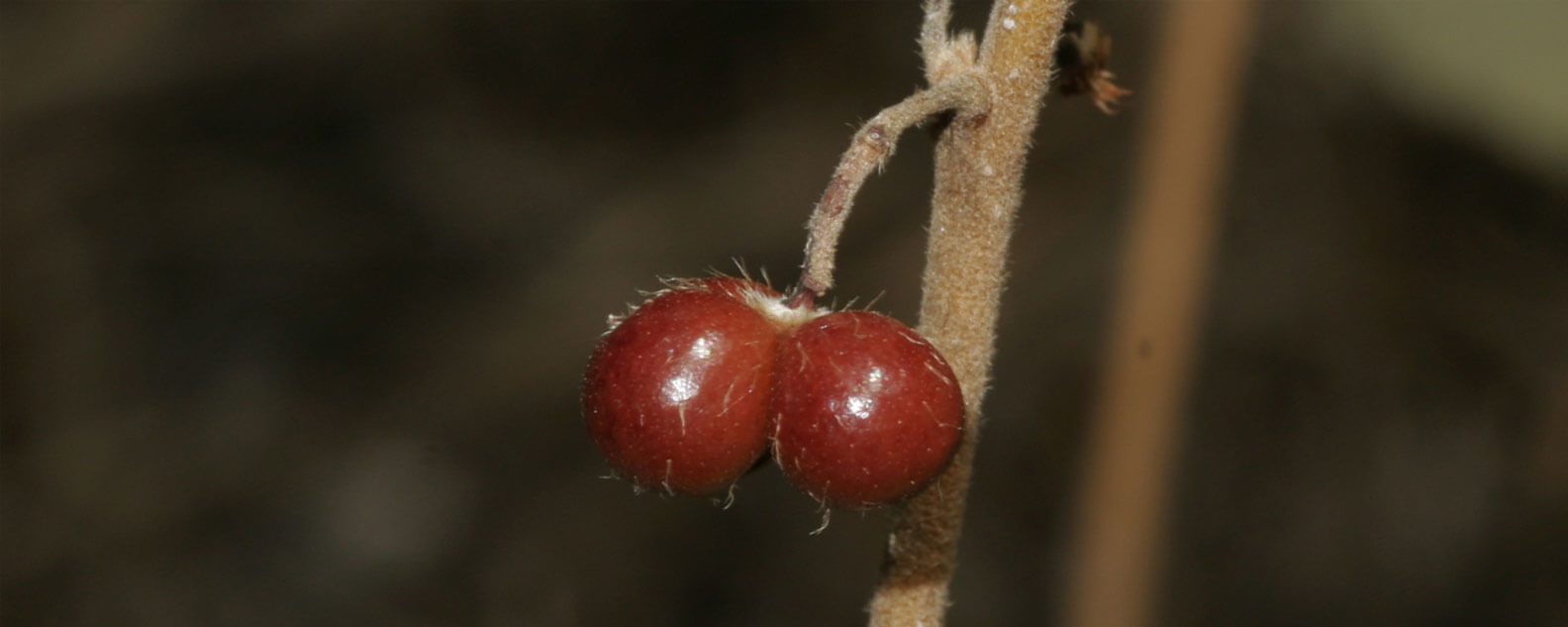
Getting the balls rolling for a name change
The well-known shrub gets its popular common name because it generally develops two red fruits covered in soft hairs that hang down on a short stalk.
The National Herbarium of New South Wales houses the first known collection of ‘dog’s balls’ made near the Endeavour River in North Queensland by acclaimed botanists Joseph Banks and Daniel Solander from Captain Cook’s voyage in 1770.
But Dr Russell Barrett said for over 250 years ‘dogs balls’ has been known by an incorrect scientific name.
"Most recently it has been known as Grewia retusifolia, which is based on a specimen from southern Myanmar collected in 1872," said Dr Barrett.
“A discovery of a similar species I made in Western Australian led me to compare European, Asian and Australian Grewia retusifolia specimens and it became evident that ‘dog’s balls’ is a completely different species,” Dr Barrett said.
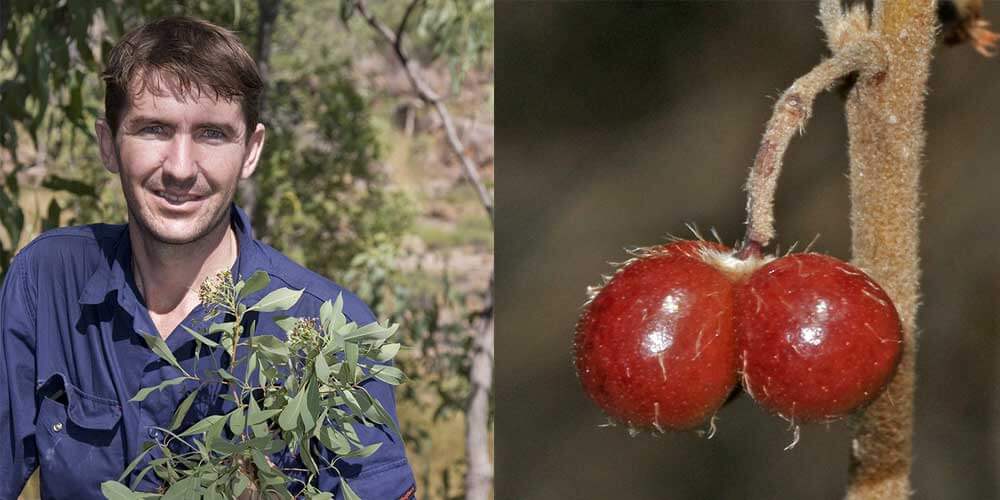
Left: Botanist from the Royal Botanic Garden Sydney Dr Russell Barrett Right: The shrub is known as 'dogs balls' because it generally develops two red fruits covered in soft hairs
More than just a quirky name
It also goes by the name ‘dysentery bush’, due to its treatment of dysentery and diarrhoea, and the Yolngu Aboriginal people from the Dhuwa moiety in the Northern Territory call it Murrnyi'/Murrtjumun.
“Being such a famous shrub with important medicinal qualities, it was quite a surprise to find that no previous botanist had recognised it was distinct from the Asian species,” Dr Barrett said.
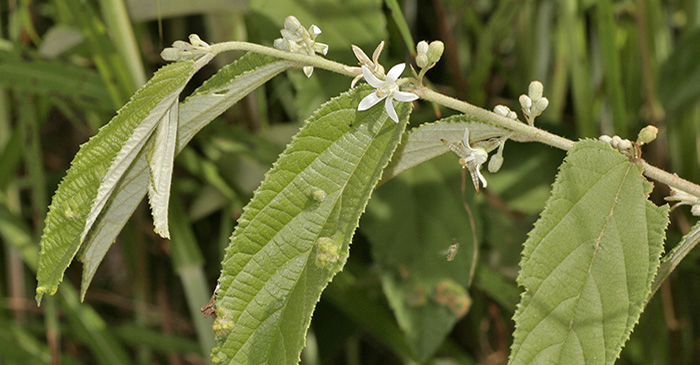
Grewia savannicola (dogs balls) leaves.
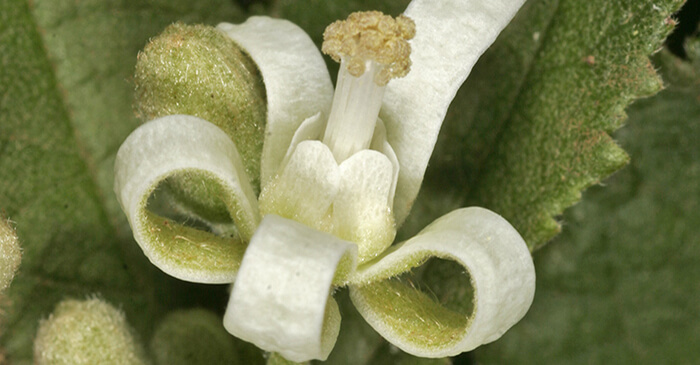
Grewia savannicola (dogs balls) flower.
New scientific name revealed
Dr Barrett's research also shows that the Asian species Grewia retusifolia is a much larger shrub and grows in a very different habitat to the Australian habitat where ‘dog’s balls’ thrives.
Being a common species in the northern Australian savanna landscape, Dr Barrett has given dog's balls the new scientific name Grewia savannicola, which means 'savanna-dwelling'.
Dr Barrett’s research has been published in the journal Austrobaileya with the proposed name Grewia savannicola, alongside another new species Grewia pindanica, which is restricted to the Broome region of Western Australia.
The paper also includes the description of a new Corchorus species, known only from a single collection in the remote Drysdale River National Park in the north Kimberley discovered in 2014.
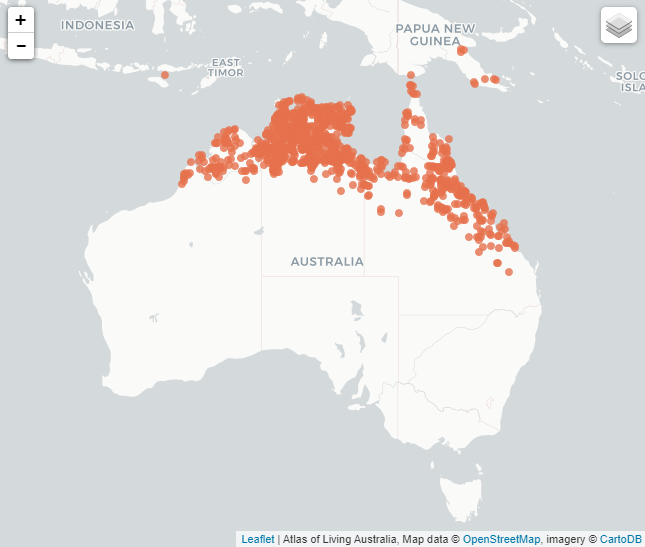
Record of where Grewia retusifolia occurs.
Herbarium at the heart of the discovery
The National Herbarium of New South Wales houses over 1.4 million plant specimens and is a vital resource for local and international botanical researchers to study the classification, ecology and evolution of plants.
“My discovery not only highlights the importance of getting out there and documenting new flora, but the crucial role herbarium specimens play in discovering new species,” said Dr Barrett.
You can also read the story on ABC News Online.
Although this well-known shrub will finally be recognised as a new species with its own scientific name, I think ‘dog’s balls’ will always be the most popular common name.
BOTANIST FROM THE ROYAL BOTANIC GARDEN SYDNEY DR RUSSELL BARRETT
If you are a journalist and have a media enquiry about this story, please click here for contact details and more information.
Related stories

For the team at the Research Centre for Ecosystem Resilience (ReCER), a request from the Blue Mountains Botanic Garden to design a hedge of the towering Nothofagus moorei, or Antarctic beech, sparked a unique collaboration between science and horticulture.
In the lower Hunter Valley, a new nature reserve named Tiraki – Wonnarua for ironbark – has become a sanctuary for one of Australia’s rarest plants.
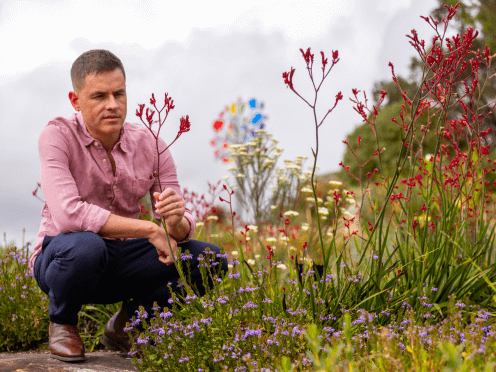
In this new episode of What the Flora!? discover why this world-first global ‘Tree of Life’ study is a new milestone in understanding the evolutionary history of flowering plants.